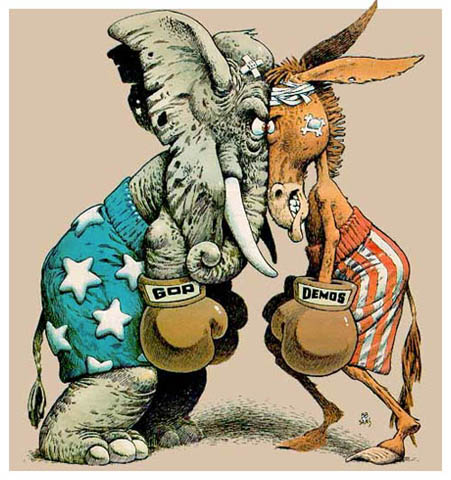After reading the article and checking out the chart on the site, you come to the conclusion that this President and his supporters are trying to scam the American public about the true meaning of the unemployment number. Not surprising for a President who puts politics ahead of everything.
Why the official 8.3 percent unemployment rate is a phony number—and what it means for Obama’s reelection
By James Pethokoukis
February 3, 2012, 11:47 am
The January jobs report is out and it seems pretty strong, at least superficially. The unemployment rate fell to 8.3 percent from 8.5 percent, the lowest rate since February 2009. And the economy added 243,000 jobs, the most since April 2011.
But does anyone believe an “official” unemployment rate of 8.3 percent really gives an accurate picture of the U.S. labor market? Even though the unemployment rate fell, so did the labor force participation rate (as more Americans became discouraged and gave up looking for work). Here’s what that means:
1. If the size of the U.S. labor force as a share of the total population was the same as it was when Barack Obama took office—65.7 percent then vs. 63.7 percent today—the U-3 unemployment rate would be 11.0 percent.2. But let’s not go all the way back to January 2009. In January 2011, the unemployment rate was 9.1 percent with a participation rate of 64.2 percent. If that were the participation rate today, the unemployment rate would be 8.9 percent, instead of 8.3 percent. As an analysis from Hamilton Place Strategies concludes, “Most of the shift of the past year is due not to the improvement in the labor market, but the continued drop in participation in the labor force.”
3. Now, to be fair, some of the decline in the participation rate is aging Baby Boomers dropping out of the labor force. But taking that into account still doesn’t get us very far, as HPS notes:
Demographic projections expect that participation rate to be at 65.3 percent. If that full participation rate is the goal, our economy is “missing” 3.8 million workers, up from the 3.4 million we noted in the white paper. The unemployment rate in that context has not budged at 10.4 percent.4. Then there’s the broader, U-6 measure of unemployment which includes the discouraged plus part-timers who wish they had full time work. That unemployment rate is still a sky-high 15.1 percent.
5. If the participation rate does level off at its current rate, according to HPS, the economy would need to generate 231,000 jobs per month to get below 8 percent unemployment by Election Day. If the participation rate continues its downward slide, however, that number would be much lower—perhaps as low as 131,000 jobs a month (see below chart). But such a decline wouldn’t necessarily be good news.
Bottom line: The unemployment rate is dropping because economic growth continues to be so anemic that nearly 4 million Americans have quit looking for work and have been disappeared by the Labor Department. This still isn’t much of a recovery.
Excerpt: Read More and the American Enterprise Blog





No comments:
Post a Comment